I’ve cleaned hundreds of kitchen mats in homes, rentals, and small cafés. The rule that never fails is simple: clean a little every day, wash once a week, and deep clean once a month. That cadence keeps your mats safe, fresh, and long-lasting. If you’ve wondered how often do kitchen mats need to be cleaned, here’s the quick answer: spot clean daily, wash weekly for fabric mats, and sanitize rubber mats weekly to biweekly. Now let’s make it easy to follow in real life.
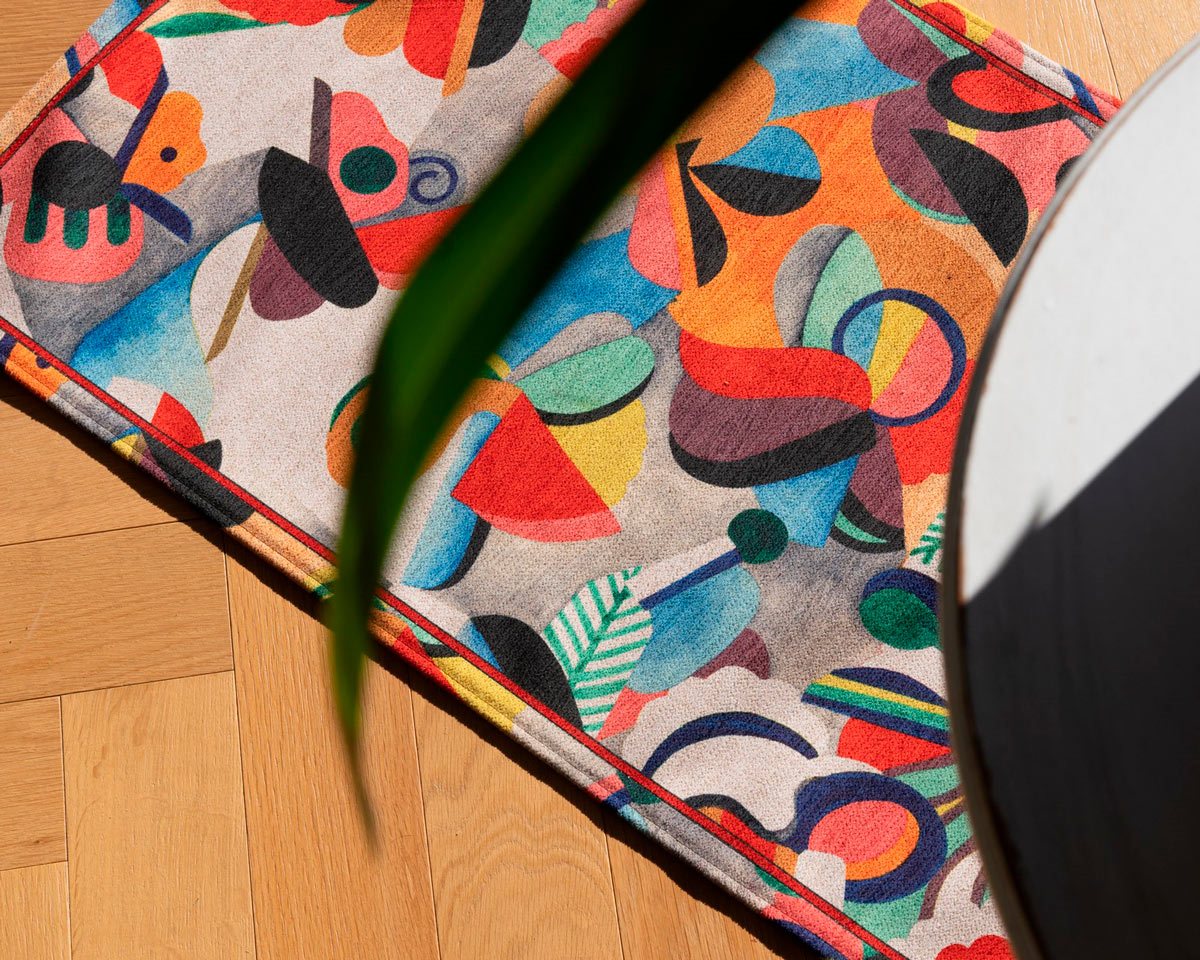
Source: www.tessituratoscanatelerie.it
The Short Answer: How Often To Clean Kitchen Mats
- Daily: Shake out crumbs, wipe spills, and let mats dry fully.
- Weekly: Machine wash fabric mats; scrub and rinse rubber or anti-fatigue mats.
- Monthly: Deep clean and disinfect, including the floor under the mat.
- After spills: Clean right away. Oil and raw meat juices should never sit.
Food safety guidance supports frequent cleaning of high-touch and high-traffic surfaces. Kitchens see grease, moisture, and bacteria. A regular mat routine reduces slip risks, odors, and hidden germs.
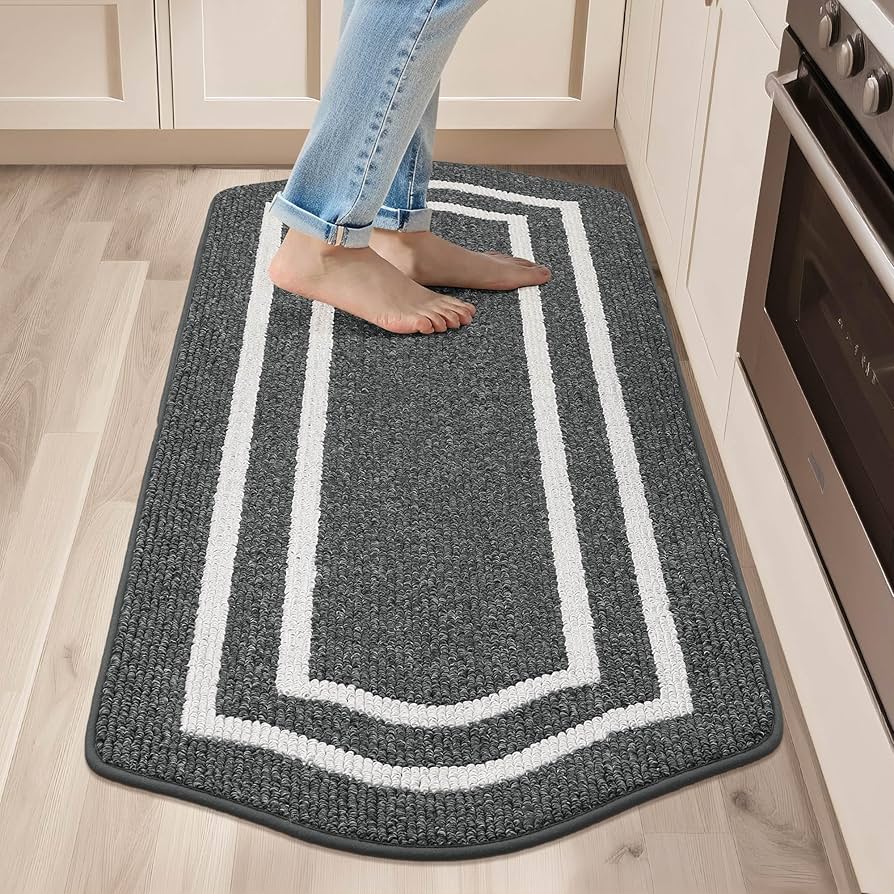
Source: www.amazon.com
Factors That Change Your Cleaning Schedule
- Foot traffic: Busy families or shared homes need more frequent cleaning. Daily wipe-downs and weekly washes are a must.
- Mat material: Rubber and gel mats handle scrubbing. Fabric mats need gentle wash cycles and full drying.
- Pets and kids: Increase frequency. Hair, dander, and spills collect faster.
- Cooking style: Frying, baking, and meal prep add grease and crumbs. Clean more often.
- Season and humidity: Wet weather and high humidity slow drying. This raises the risk of mildew.
From my experience, homes that cook most nights do best with a weekly wash schedule. Light-use kitchens can stretch to every 10–14 days, but daily spot care still matters.
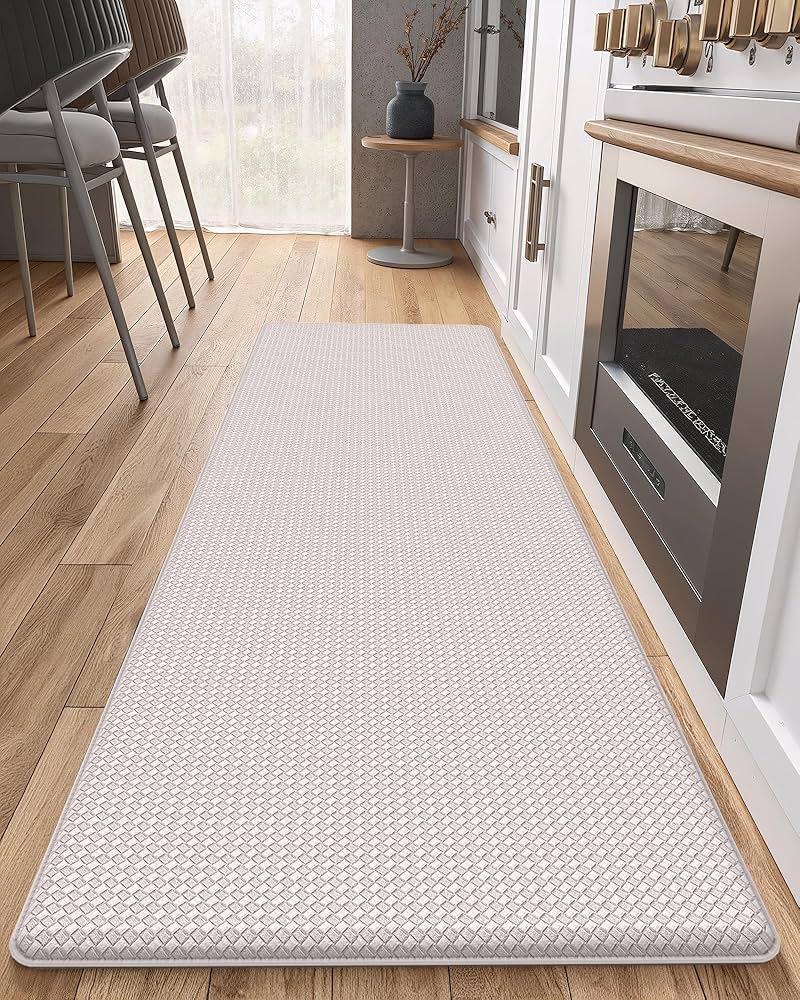
Source: www.amazon.com
Cleaning Schedules By Mat Type
- Rubber or commercial anti-fatigue mats: Daily wipe and shake. Weekly scrub with mild degreaser. Monthly disinfect. Rinse well and dry.
- Fabric or microfiber mats: Daily shake. Weekly machine wash on cold or warm. Air-dry or low heat. Deep clean monthly.
- Memory foam or gel mats: Wipe daily. Weekly gentle hand wash or sponge clean with mild soap. Never soak foam cores. Air-dry flat.
- Bamboo or cork mats: Wipe daily. Weekly clean with a damp cloth and mild soap. Do not over-wet. Oil or seal as directed by the maker.
If a mat’s care tag says otherwise, follow the label. Manufacturer guidance protects warranties and keeps mats safe.
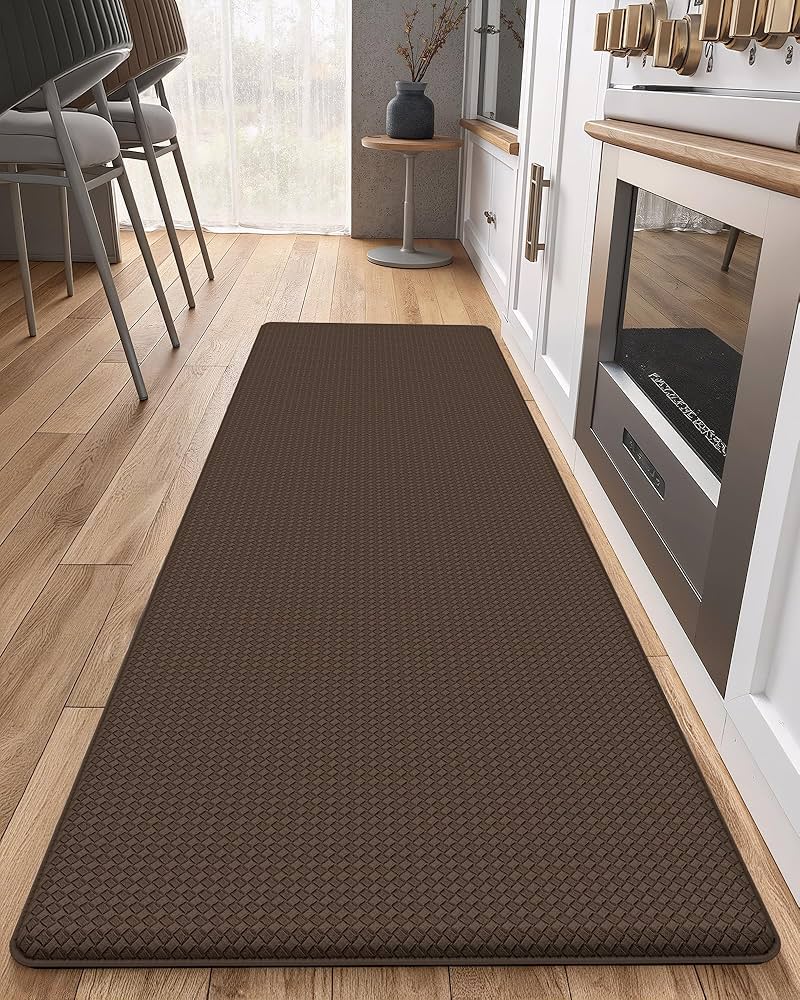
Source: www.amazon.com
Step-By-Step: Quick Daily Care And Weekly Wash
Daily quick clean
- Shake or vacuum: Remove crumbs and grit that wear down fibers.
- Wipe spills: Use warm, soapy water. Dry with a towel.
- Air it out: Stand the mat on edge for 10 minutes to dry the base.
Weekly wash for fabric mats
- Pre-treat stains: A bit of dish soap on greasy spots works well.
- Machine settings: Cold or warm, gentle cycle, mild detergent.
- Drying: Air-dry flat. If allowed, tumble on low heat until fully dry.
Weekly scrub for rubber or anti-fatigue mats
- Mix mild detergent in warm water.
- Scrub both sides with a soft brush.
- Rinse well. Dry fully to prevent a slick film.
Monthly deep clean
- Disinfect per material. Clean the floor under the mat too.
- Inspect edges, backing, and wear spots.
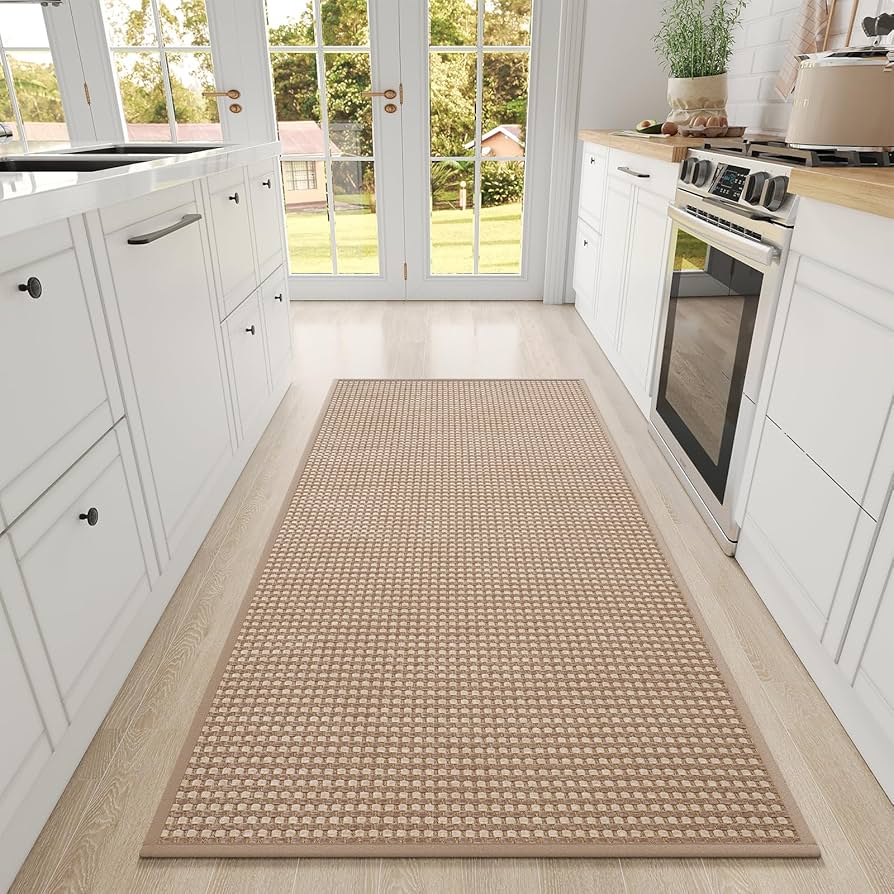
Source: www.amazon.com
Deep Cleaning And Disinfection Best Practices
- Safe disinfecting: For nonporous rubber, use a kitchen-safe disinfectant. Let it sit as directed. Rinse and dry.
- Avoid harsh bleach on fabric: It can weaken fibers and fade dyes. Oxygen-based cleaners are gentler.
- Vinegar use: A 1:1 mix of vinegar and water helps with odor on many mats, but test first on foam and natural fibers.
- Drying is key: Most issues come from moisture trapped under mats. Always dry both sides and the floor.
Industry and public health recommendations stress contact time for disinfectants and full drying. That is what actually reduces microbes and mold.
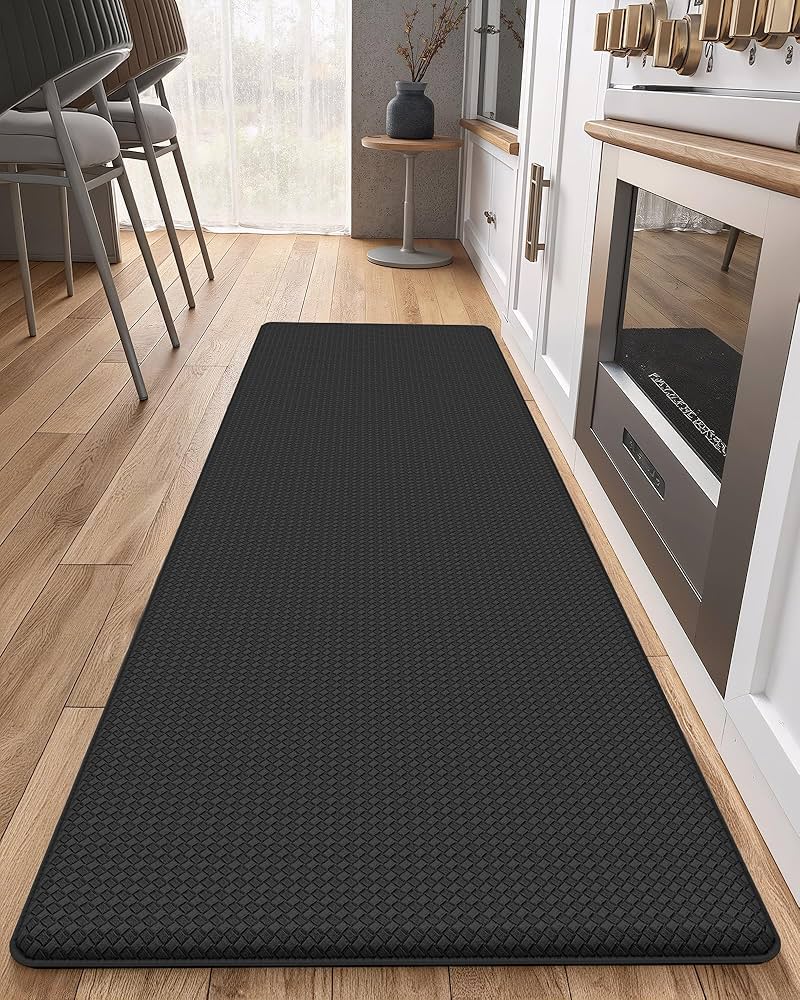
Source: www.amazon.com
Signs Your Mat Needs Immediate Cleaning Or Replacing
- Slippery feel or oily film after cooking.
- Dark edges, fuzz, or musty smell.
- Stains that return after drying.
- Cracked rubber, curled corners, or worn backing.
- Persistent odor even after a wash.
If a mat will not lie flat or the backing is slick, replace it. Safety first. A new mat is cheaper than a fall.
Common Mistakes And How To Avoid Them
- Letting moisture sit: Always dry mats and the floor underneath.
- Using too much detergent: Residue attracts dirt. Rinse well.
- Hot dryer on foam: Heat can warp foam and break adhesives.
- Skipping the underside: Grease and water collect there too.
- Ignoring care labels: Different materials need different care.
One lesson I learned early: even the best mat smells if you never lift it. Airflow matters.
Eco-Friendly And Safe Products To Use
- Mild dish soap: Cuts kitchen grease without harsh fumes.
- Oxygen-based cleaners: Good for fabric stains and brightening.
- Plant-based degreasers: Effective for rubber mats.
- Microfiber cloths: Lift residue with less product.
- Baking soda: Handy for deodorizing fabric mats before washing.
Choose fragrance-free options if you cook often. Strong scents can linger and bother sensitive noses.
Frequently Asked Questions Of How Often Do Kitchen Mats Need To Be Cleaned
Q. How Often Should I Wash A Fabric Kitchen Mat?
Wash weekly if you cook most days. If your kitchen is light-use, every 10–14 days is fine. Still, spot clean daily and dry fully.
Q. Can I Put Rubber Mats In The Washing Machine?
Usually no. Rubber mats can damage machines and break down. Scrub by hand with mild soap, rinse, and air-dry.
Q. What If My Mat Smells Musty?
That means moisture is trapped. Wash or scrub the mat. Disinfect if allowed. Dry both sides and the floor underneath. Improve airflow.
Q. How Do I Clean Memory Foam Kitchen Mats?
Wipe with mild soap and water. Do not soak. Air-dry flat. If the cover is removable and washable, follow the label.
Q. Is Bleach Safe For Kitchen Mats?
Use only if the label allows it and the material is nonporous. Rinse well. For fabric mats, choose oxygen-based cleaners instead.
Q. How Often Should I Clean Under The Mat?
Lift and wipe under the mat at least weekly. Do it sooner after spills or heavy cooking days.
Q. When Should I Replace A Kitchen Mat?
Replace it if it will not lie flat, the backing peels, it stays slippery, or odors persist after cleaning.
Conclusion
Clean a little each day, wash weekly, and deep clean monthly. That simple rhythm keeps your kitchen mats fresh, safe, and long-lasting. It also makes your kitchen feel calmer and cleaner.
Try this today: lift your mat, wipe the floor, and give the mat a fast wash or scrub. Set a weekly reminder. Your feet, and your kitchen, will thank you.
Want more practical home care tips? Subscribe, share your questions in the comments, and tell me what mat you use.
